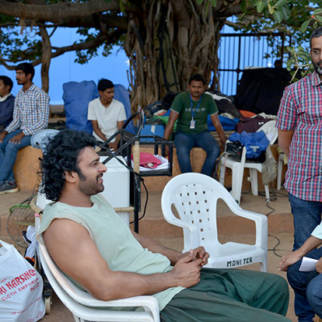PBS: Director Kireet Khurana talks about his film Toonpur Ka Superrhero
-
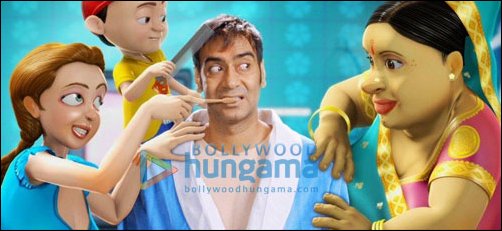 Could you enlighten us with the production pipeline of your film briefly? How long did it take to piece it together? The entire pre-production phase kicked off, and completed in my studio. Pre-production consisted of Storyboards, Layouts, environments, Read More">prop and character designs and sorting out the color keys. We’ve also done a bit of theRead More
Could you enlighten us with the production pipeline of your film briefly? How long did it take to piece it together? The entire pre-production phase kicked off, and completed in my studio. Pre-production consisted of Storyboards, Layouts, environments, Read More">prop and character designs and sorting out the color keys. We’ve also done a bit of theRead MoreCould you enlighten us with the production pipeline of your film briefly? How long did it take to piece it together?
The entire pre-production phase kicked off, and completed in my studio. Pre-production consisted of Storyboards, Layouts, environments, prop and character designs and sorting out the color keys. We've also done a bit of the animation; we set the bible and the tone for the film. This planning and visualization phase lasted about eight months. Production process was simple, since we meticulously planned out the film in pre-production. When Ajay came to the chroma sets to shoot the film, we would share the storyboards with him. We would educate them with the 2D environment and how they would look in that space for their reference.
Additionally, we would take the actors through the entire 3D animation blocking phase of the scene; this gives the actors a sense of how they'd look in the shots. Although in the film, locations keep changing, the actors are still present on the chroma sets. With this the actors get a glimpse and realize the gravity of the situation of the scene before they start performing for the shot. We shot the principal actors on chroma backgrounds and took those shots and edited the whole film, where we cleaned out the green screen backgrounds and fused the CGI elements that were to be used for the scenes. Overall it took two and half years to complete.
As a director, what was the brief that you gave the artists in regards to modeling the characters?
I'm an artist myself and I've learnt animation the classical way. I've studied anatomy for years; my team designed the characters under my supervision. The idea was to get the anatomy of the animation characters as right as possible. If you're from the animation industry, you and I both know that there are hidden gaps that come along with such projects. This is mainly because, they aren't trained artists sitting on the machines they're technicians.
My job was to ensure that these gaps are filled in as much as possible, I have to ensure that the anatomy is right, the facial rigs are flexible, there are strong line of action of the characters poses, to make sure that the rigs offer enough suppleness to achieve animation principles such as squash and stretch which is used in cartoon type animation. -
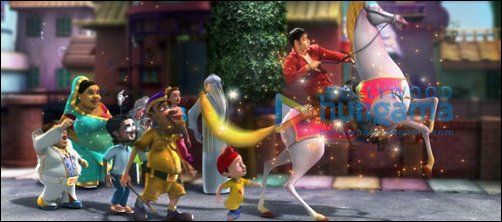 A message for aspiring filmmakers and animators…. Focus on art, creativity, on story telling, filmmaking; you should get involved in the whole process no matter what you specialize in, Read More">even though you’re involved in a miniscule process of a film. One should think about the scheme of things and where would certain assets fit inRead More
A message for aspiring filmmakers and animators…. Focus on art, creativity, on story telling, filmmaking; you should get involved in the whole process no matter what you specialize in, Read More">even though you’re involved in a miniscule process of a film. One should think about the scheme of things and where would certain assets fit inRead MoreA message for aspiring filmmakers and animators....
Focus on art, creativity, on story telling, filmmaking; you should get involved in the whole process no matter what you specialize in, even though you're involved in a miniscule process of a film. One should think about the scheme of things and where would certain assets fit in a film, in terms of the story and visualization. Whatever you're doing is going to be a part of a larger picture, always keep that picture in your mind. If you understand the story you understand the performance and the nuances of the story, this improves an artist and an individual. -
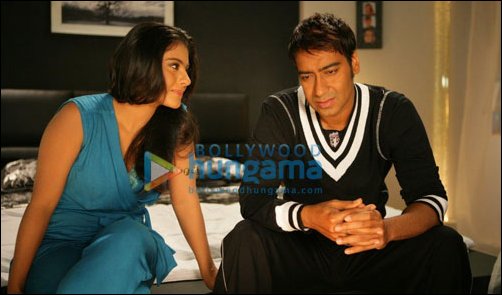 What’s your take on Indian animation filmmaking and the mythological trend that’s occurring this year? My take is simple, there are no bad stories only bad story telling. Someone asked my to do a mythological film a while back, Read More">I refused only because I would like to have my own story. Ramayana and Mahabharata areRead More
What’s your take on Indian animation filmmaking and the mythological trend that’s occurring this year? My take is simple, there are no bad stories only bad story telling. Someone asked my to do a mythological film a while back, Read More">I refused only because I would like to have my own story. Ramayana and Mahabharata areRead MoreWhat's your take on Indian animation filmmaking and the mythological trend that's occurring this year?
My take is simple, there are no bad stories only bad story telling. Someone asked my to do a mythological film a while back, I refused only because I would like to have my own story. Ramayana and Mahabharata are one of the most brilliant stories ever told in the history of mankind. I feel you'd want to watch Arjuna the film because the promos are exciting. This is purely someone's interpretation of the film, the story is the same but the storytelling has been changed completely.
In Ramayana and My Friend Ganesha 3, I thought the storytelling procedure was weak when it comes to facial animation. I see that we stumble upon this recurring problem every time. For the films we've added a very flexible facial rig, so our characters are quite emotive and are pretty extensive. To get the expressions right we've meticulously planned out the facial rigs.
We do mythological films because I believe that, producers don't want to take risks by introducing new characters. We are conservative in commissioning films that are unique in it, this is what I assume. A producer's angle takes over this decision. -
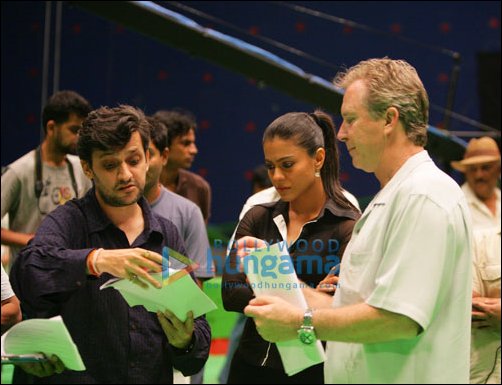 Where do you think we stand on the global animation map today, do you see India churning out quality like Pixar animation? India has a strong hub as far as outsourcing is concerned, it’s not like we don’t have creative talent here. The animation market here in India is almost non-existent because, Read More">we’re not ableRead More
Where do you think we stand on the global animation map today, do you see India churning out quality like Pixar animation? India has a strong hub as far as outsourcing is concerned, it’s not like we don’t have creative talent here. The animation market here in India is almost non-existent because, Read More">we’re not ableRead MoreWhere do you think we stand on the global animation map today, do you see India churning out quality like Pixar animation?
India has a strong hub as far as outsourcing is concerned, it's not like we don't have creative talent here. The animation market here in India is almost non-existent because, we're not able to portray and tell our own stories efficiently. We lack the ability to conceptualize and visualize stories here therefore; we need a lot of creative help from overseas. It's a matter of projects going wrong in this country, but internationally DreamWorks is said to be executing its next movie in India. As far as quality is concerned, good quality work is already happening, a large chuck of work for The Golden Compass was done at R&H studios here in India as well as Night in the Museum.
What makes a good animated film according to you?
The basis of any film has to have a great story, which is the most important element. The film will succeed even if its animation is average. There should be a strong emotional connect with the audiences; they have to empathize with the character. This is essentially the ingredients that make for a good film. The audiences will be forgiving even if you falter in the execution because they engage with the story. But if the story is not engaging enough and the film has great animation, success will fail to deliver it. -
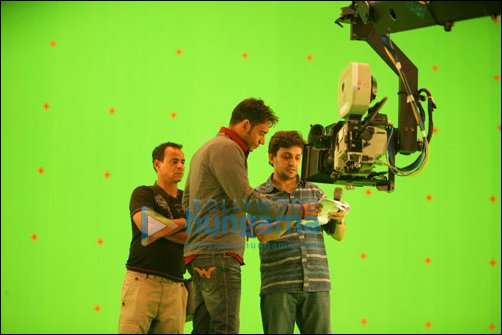 What motivated you in choosing ‘the classical style of animation’ for your film? Toonpur has a lot of cartoony snappy timing to it, It’s about jaw dropping, eye popping, Read More">body breaking in parts with a loony timing to it. Therefore we chose a classical animation style for the 3D film. What do you think studiosRead More
What motivated you in choosing ‘the classical style of animation’ for your film? Toonpur has a lot of cartoony snappy timing to it, It’s about jaw dropping, eye popping, Read More">body breaking in parts with a loony timing to it. Therefore we chose a classical animation style for the 3D film. What do you think studiosRead MoreWhat motivated you in choosing 'the classical style of animation' for your film?
Toonpur has a lot of cartoony snappy timing to it, It's about jaw dropping, eye popping, body breaking in parts with a loony timing to it. Therefore we chose a classical animation style for the 3D film.
What do you think studios and animators lack in our country?
The first thing that I notice is that when I've made something, people ask me what softwares have I used. This I think is the biggest fallacy and misconception people have, because the computer just offers an extension of your mind's eye. In fact, it places greater creative challenges, iterations and good quality. The demand gets more when the computer offers you more. I always emphasize on focusing on the art and the creative processes of the work. The biggest factor that I feel that we need to surmount here is that, most of the people go through software training institutes and there are no laws to stop them. The government should formulate laws to stop them from marketing their institutes as animation training institutes because they're software training institutes. They mainly talk about the technicalities of the software. For example, Photoshop can be learnt in 2 weeks, but to learn how to paint takes a lifetime.
I feel people who have grown from JJ school of arts or Raheja who've done courses that extend up to five years should be taught Photoshop that would have a greater impact aesthetically and technically. Animation is an expensive medium and in India our finances are restricted in making expensive animated films. With the turnovers that we're witnessing we're caught up with very limited bandwidth with which we have to make a movie. The least we could do is to hope that we recover what we've invested in with half million dollars, this is where things are coming from.


